Anne Cecilie Lie’s sound walks open up the landscape, allowing us to see as well as hear aspects we normally do not have access to, from trees drinking to the voices of bats.
Entangled in the Mesh
Anne Cecilie Lie is one of the artists that has been associated with NOBA since its very beginning. For her Master of Fine Arts project in scenography at the Theatre Academy in Fredrikstad, Lie worked with the surroundings of NOBA, the campus of the university institutions at Ås, Norway, creating a sound walk that enable the audience to experience the campus in new ways.
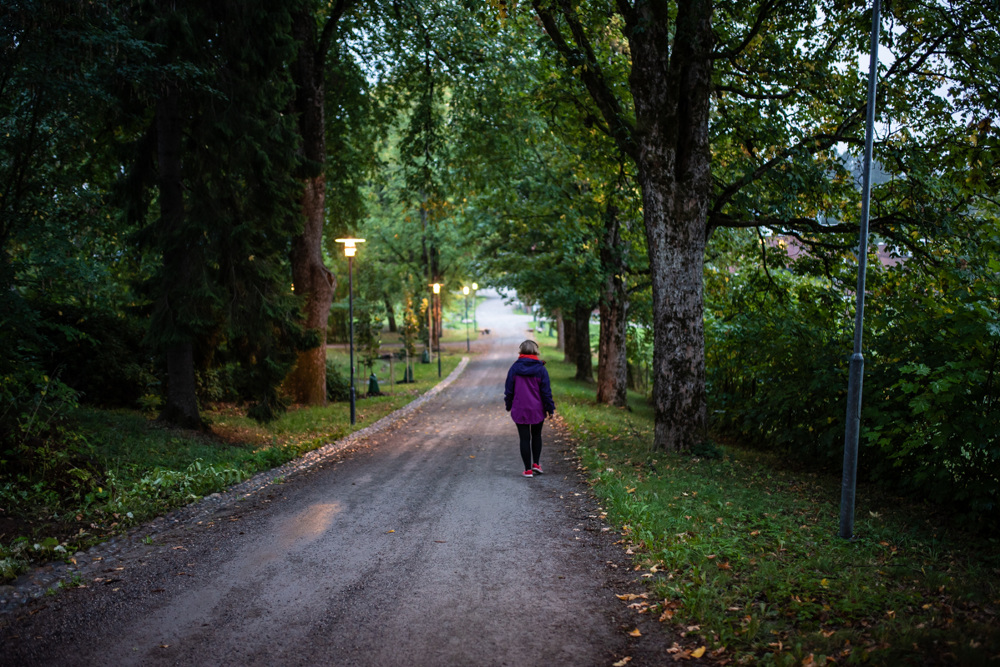
Through her fellow MA student Annike Flo, former project manager at NOBA, Lie got connected to Vitenparken, NOBA’s home institution. She knew early on that she wanted to work with the campus park, but had quite a few other ideas for how to work with that site, including physically moulding the landscape by inserting objects or taking them away. However, the more she learnt about the landscape, the more she realized how much it has already been moulded by humans over centuries, even millennia, and that she would prefer to re-read the story of the landscape, rather than add anything to it. Gradually the idea of working with sound set in, and she created Entangled in the Mesh.
In this geolocative sound walk, the audience can use an app to listen to specifically placed soundscapes triggered at specific GPS locations within the park. It is still available at Vitenparken, now in an updated version. The walk includes birdlife and the sounds of people walking about, such as we might hear when moving around the park, but also more “hidden” sounds such as the nightly activity of bats, the sound of dolphins echolocating under water, trees drinking, and the movements of bark beetles through the wood of a tree. Seeking to retell the landscape through the voices that are not normally heard, the artist allows us to “listen in” on life forms we do not normally have access to, the non-humans we do not normally offer much thought. The title, Entangled in the Mesh, is a clear reference to philosopher Timothy Morton’s The Ecological Thought, where he offered the idea of the mesh as a term for “the interconnectedness of all living and non-living things.” *
Interspersed with poetic snippets of text by an array of different voices, the sounds of rain, thunder and Gregorian song, the sounds combine to make for a rather meditative, but also eye-opening experience of what the landscape contains. The lush, green campus at Ås has an appearance of being pleasant, healthy and natural, with colourful flowers, bustling insects and chirping birds, but Lie’s voice in the sound walk explicitly points to how we as humans have processed and changed everything around us, and lifts forth the voices of the non-human organisms that are given less space because of our activities.
This may, to many, seem an untraditional choice for a scenography project, but Lie explains that her school focused on scenography in an expanded sense of the term. The theory of scenography, how to read a room and the things placed within it, including the relationship with the human actors, was here used to read the world around us. Architecture, social and political situations were all considered a part of this picture and the overarching goal of how to (re)activate a space to create certain experiences.
Entangled in the Mesh is different from Lie’s previous sound walks in that it is non-linear. Her first sound walks were shorter pre-recorded tracks following a fixed route, enabling her to build a specific narrative and natural dynamics into the walk and sound work. The non-linearity of Entangled in the Mesh allows the audience to pick their own route through the landscape, resulting in different experiences. Although this sometimes makes for a narrative challenge, Lie loves that the audience is part of making the work come to life and that the work lives in a more fluctuating state. Therefore, all her sound walks after this have been facilitated through geo-locative sound apps.
Woodworks
Anne Cecilie Lie was part of the Woodworks pilot project at NOBA (2019-20), which brought together artists, plant biologists and environmental humanities scholars in experiential encounters with the forest and its many life forms. The idea behind Woodworks was to encourage collaboration and further understanding between these fields, starting from a common interest in issues of climate change and how to relate to other species, focusing on plants. An important aspect was to share methods, the particular approach to how one actually works with the woods. Lie shared, then, some of the methodology behind her sound walk. This involved a lot of sound sampling, of course, including working with a bat researcher in sampling the sounds of bats at local lakes and transposing their ultrasound down to a frequency where we can actually hear it. She also emphasized the work involved in getting to know the history of the campus, what the landscape was like in previous times, how it has been shaped geologically, and what non-human life forms are to be found within it. Lie sees a lot of overlap between the methods of artists and scientists in going into the field, having a question but not knowing quite what one is looking for, proceeding by trial and error. Art, however, has a more open mandate in producing questions, rather than answers, and the methods artists use can be less structured than what is expected within the sciences.
As part of the Woodworks workshop in June 2020, the participants walked Entangled in the Mesh together. Because not everyone had brought headphones or smartphones compatible with the geo-locative sound app, a group of five ended up walking in a cluster using Lie’s cell phone, which gave an added interrelated dimension to this already interactive piece.
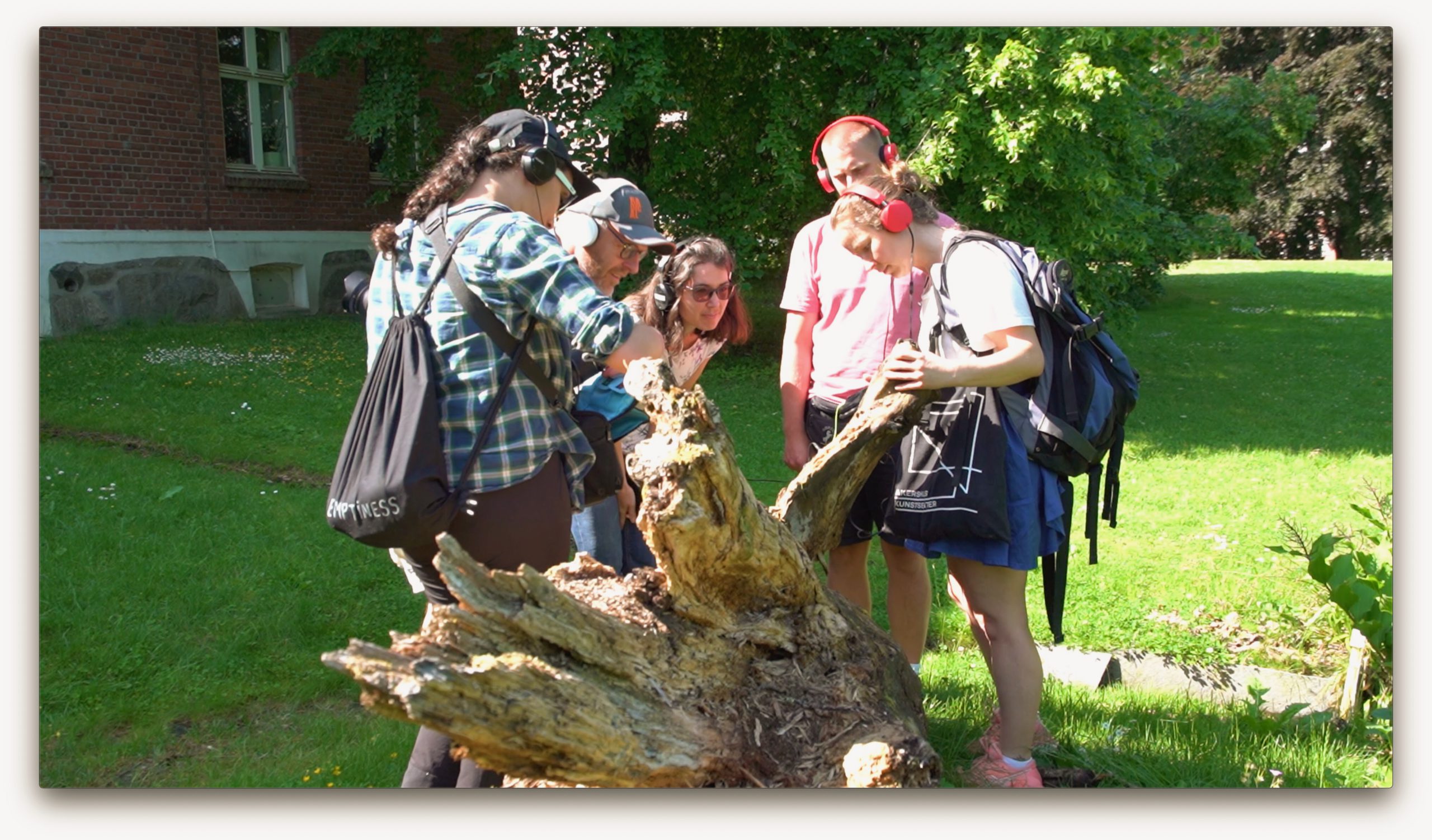
Slowing down through opening up
Lie’s later sound walks are even larger in scope. Her follow-up Entangled Formations, made for the Prague Quadrenniale 2019, altogether included 5-6 hours of sounds focusing on the life of birds, encouraging the audience to take their time, or return to the site, if they wanted to have the full experience. In this way, Lie seeks to inspire the listeners to slow down, to take the time to get to know the landscape in new ways. Ironically, this walk had a relatively short life span, as an update from Google meant the app she was using no longer works. These technologies are generally quickly outdated as new versions replace them, and Lie quite likes the idea that one does not quite know for how long a piece she has made will actually exist. Another aspect of the technology is that it can alienate some of the audience; she uses the example of her parents, who think the app is impossible to use. So, she is also working to make her sound walks as accessible and intuitive to use as possible.
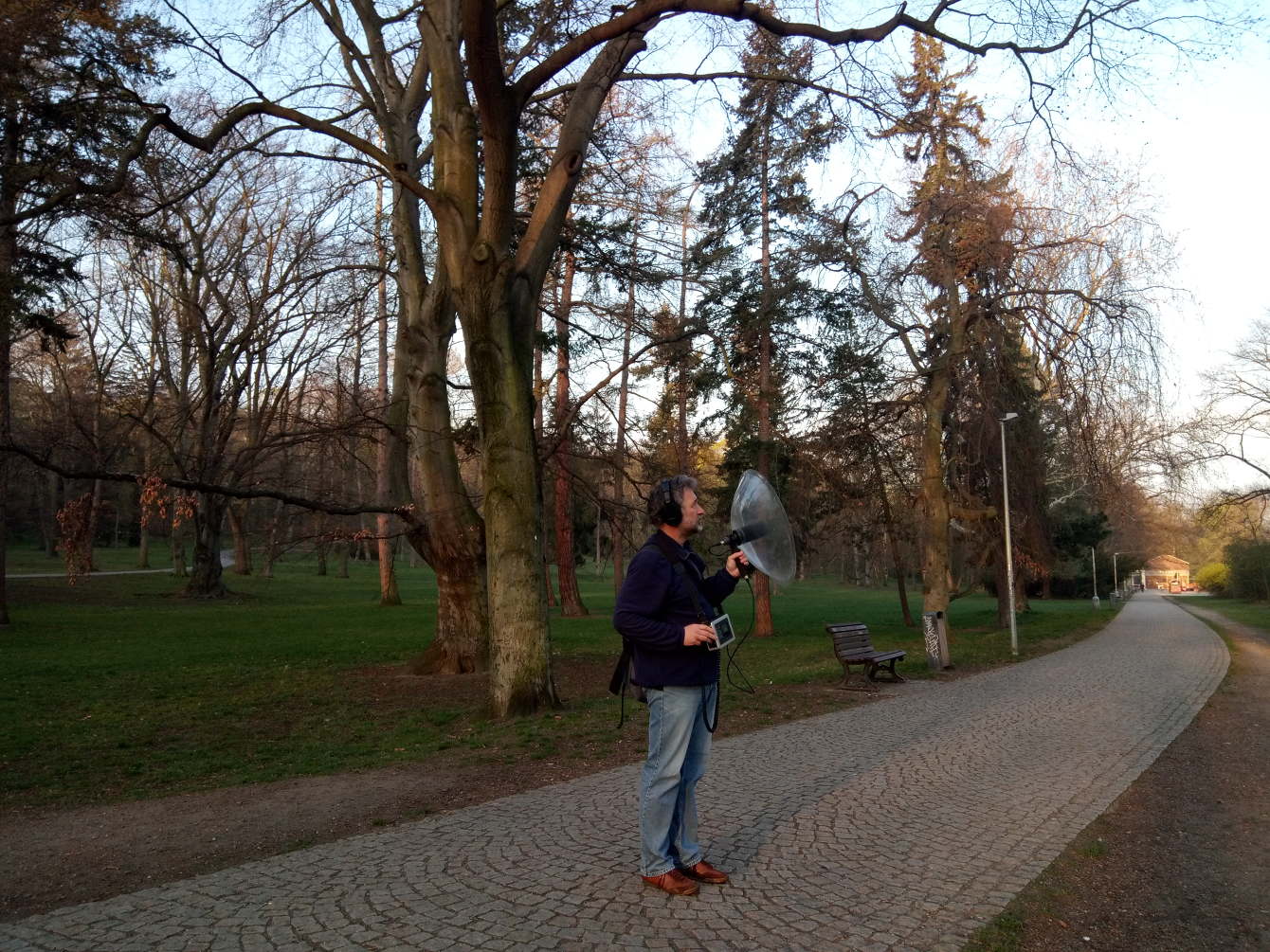
The friction of the Anthropocene
In later works she seeks to introduce more friction in her works. She does not want it to be an undividedly pleasant experience; the soundscape should also challenge us. The last thing she wants is to over-aestheticize the landscape, to lift forth only what is beautiful and comfortable. “What we call nature”, she says, “is everything, humans and traffic and beetles, everything is incorporated, Google maps included”. This is central to discussions about the Anthropocene, a still controversial term for our current geological era, where human influence on Earth is great enough to be seen in the geological layers of the planet. The term has become quite commonly used by environmental humanities scholars and artists, since it pinpoints the extent of human involvement, but is problematic in entailing that we often also think humans possess the solutions to the challenges of climate change, pollution and biodiversity decline. Critical discussions of the Anthropocene tend to focus on the systems involved, and often zoom in on exploitation, both of vulnerable human groups and of organisms in our environment.
The ethics of digital technology
Lie has an ambivalent relationship to the technologies she uses. “It’s quite problematic to talk about the Anthropocene through a smartphone”, she observes. By using the cell phone and GPS, one is inevitably connected to the production processes of these technologies. These processes are harmful in multiple ways, she points out: for the environment, and for the “slave labour” workers who mine the heavy metals and produce the devices. Satellites are connected to massive servers that require huge amounts of energy, which we also tend not to think about as these material aspects of the online sphere are not visible to us. These invisible processes that are involved in our using the smartphone often hit hardest in the parts of the world that have the toughest conditions, both in terms of environmental strains and human rights.
Increasingly, Lie finds it important to point to what these technologies entail in her sound walks. “It is probably not very clear in the Ås sound walk”, she says, “but in the works I am making now I work specifically with that theme: what our digital culture is, where it is coming from, what it means to use it”. She has not quite decided whether it is actually right for her to work with this kind of technology, whether the intention of the piece balances out the fact that she contributes to cycles she is critical of.
Helmet ecosystems
In another recent series of works, Lie has created wearable helmets containing a mini ecosystem. For the first one, Intersecta, she worked with bark beetles. In creating a balanced environment for them to live inside of the helmet, she got help from two researchers from the Norwegian University of Life Sciences. One worked specifically on spruce bark beetles, focusing on how to ensure trees are resistant rather than killing off the beetles. “It’s interesting who gets marked as ‘the bad guy’”, Lie observes. “Of course, bark beetles can be harmful to forests, but overall, the big ‘bark beetle attacks’ people talk about mostly occur in mono-cultural forests, where humans only plant one type of tree, at specific distances, and the trees are not that healthy”. In a healthy, biodiverse forest, she maintains, bark beetles are not a pest; they are vital to the ecosystem. The stronger trees in such woods are better equipped to coexist with the beetles, who have a key function of breaking down dead wood and making it accessible to a range of other organisms. As Lie researched the lives of spruce bark beetles, she realized that most often the problem is in the commercial forestation.
Lie also talked to a research centre in Sweden which breeds bark beetles, to get their help in ensuring the beetles had as good conditions as possible inside the helmet, and worked with a PhD candidate at NMBU who helped her establish the culture at Ås and keep it thriving.
Again, she was acutely aware of the ethical dimensions of her work, and the responsibility that she took on in placing these living creatures inside the helmet. When used for art, people typically display much more concern for the tiny critters than they do in other contexts. Bark beetles, as mentioned, are considered pests, and most bark beetle research has been dedicated to finding efficient ways of killing them. Insects are not subject to the same ethical guidelines as vertebrate animals, so researchers are free to treat them as they like – although of course, some will find their own ethical compass entails a sense of responsibility also for their insect research subjects. Artists are held under different societal scrutiny, so although there is nothing in principle keeping them from treating insects cavalierly, in practice this would cause huge reactions. Lie reports getting a lot of questions about the wellbeing of the beetles and other critters inhabiting the helmet. She is relatively sure she gave them a good environment, probably prolonging their life span, but as she observes, like in any zoo, one can never be entirely sure that just by covering their basic needs, they are actually happy. It is important to her to proceed as ethically as possible, not to be another actor who harms creatures in order to point attention to something, she says. Art such as hers can hopefully lift forth ethical questions surrounding how we treat insects and other small critters, lifting forth the importance of caring for the other.
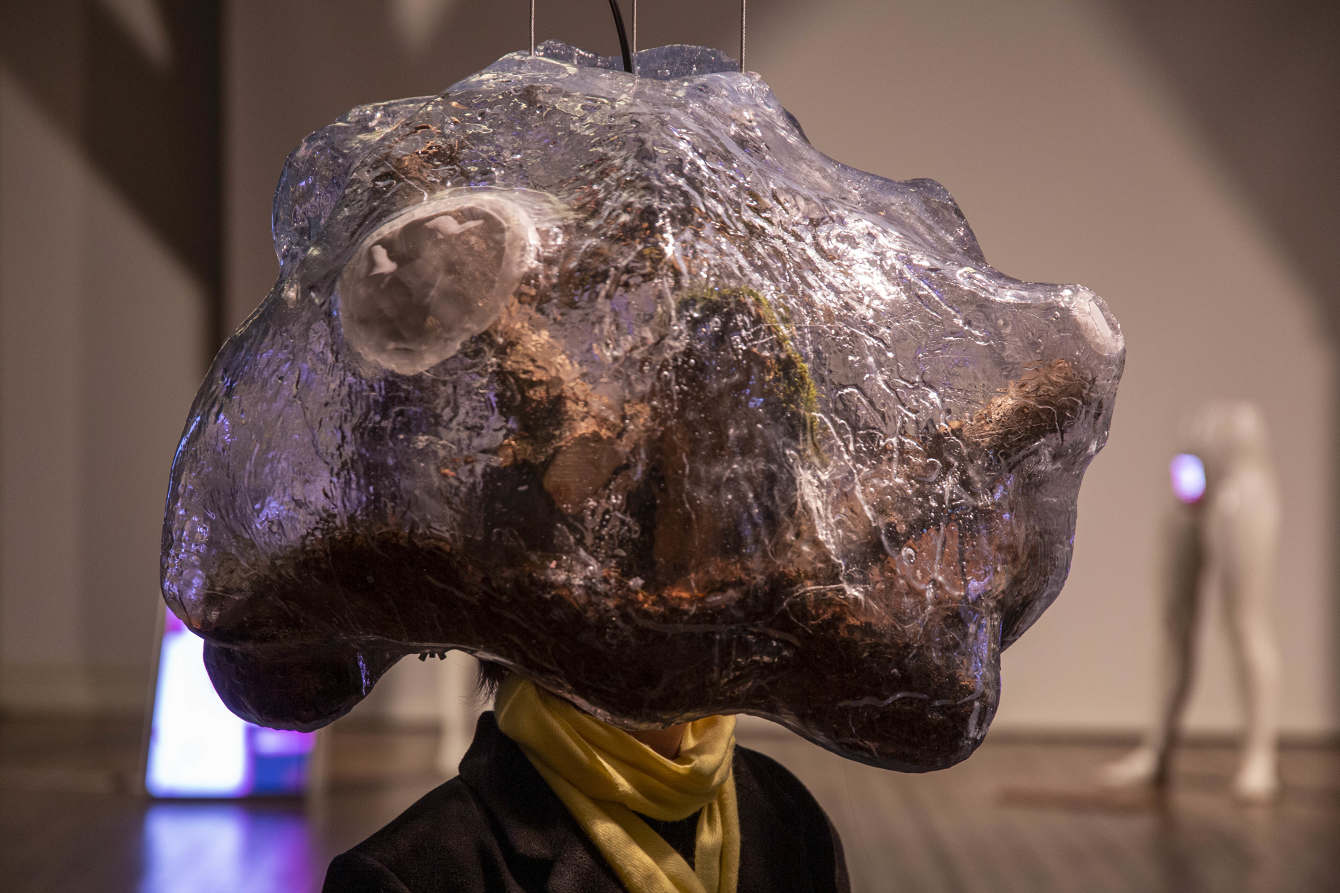
As with Lie’s other recent works, this too has a strong sound dimension. The helmet is threaded entirely down over individual audience members’ head, so that the ecosystem encompasses their face, filling their vision. As the helmet is lowered into place, the bark beetles start “telling their story” through slightly robotic female voices, informing you about the various organisms within the helmet and what conditions they like. They point out how they communicate through sound and smell, but also more poetically, that they see time differently, seeing past, present and future simultaneously, and share their views of the future of humankind and our view of death. Throughout, you hear the sounds of the bark beetles in the background.
A second helmet, Intersected Waterbodies, took deep-sea mining and the unique ecology of hydrothermal vents as its starting point, working with researchers at NTNU and UiB to learn how to care for a saltwater culture, including small shrimp, corals and sea lice that were collected in the “aquarium” environment. The artwork also included sound of deep-sea hydrothermal vents and a video work including ROV footage by researcher Hans Tore Rapp at the K. B. Jebsen Centre for Deep Sea Research at the University of Bergen. Rapp discovered Loki’s Castle, a mid-Arctic underwater volcanic ridge consisting of five hydrothermal chimneys between Norway and the Feroe Islands in 2009, and he was very helpful in sharing his knowledge. These vents are now being explored by NTNU and others for possible mining of the rare minerals used in our electric batteries, smartphones and computers.
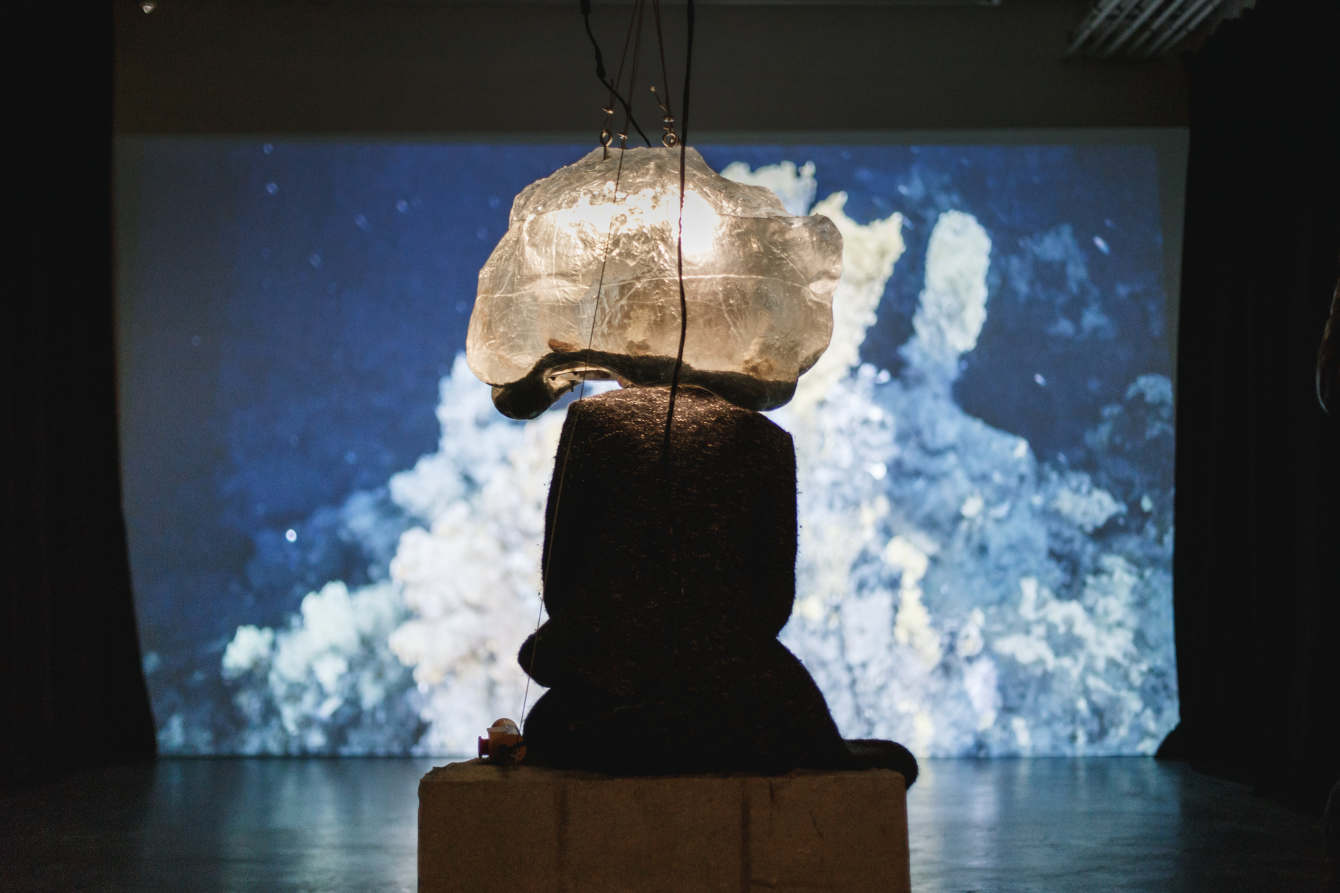
Vulnerable bodies
Following up on the water theme, a new sound walk will open in Oslo this fall as part of Periferien Festival. It departs from the topics of water conducts and digital toxicology, how minerals and materials from these technologies can leak out into water and waste systems and get into our bodies. Again, Lie’s work touches on invisible processes, this time at the molecular level: all the substances that enter our bodies without our being aware of it. “Especially in these times of corona”, she says, “we have become very aware that we are not closed”, we are vulnerable to our surroundings. She considers it a good thing that we, especially in the Northern parts of the world where life is generally easy on us, are made to reflect on the choices we make and how they come back to us. Covid-19 has a direct link to biodiversity decline: as we are destroying fragile ecosystems, viruses and other pathogens can easily move to more populated areas and jump from other species to humans. Lie’s water piece focuses on how we are indeed connected, through water, to each other and to other species and substances. To her, this is a good thing, but she thinks many people will also see it as scary. Her fear is that some in the audience might react differently from what she hopes, not wanting to drink water or be near others. The openness of art means that even if the artist has a message she wants to convey, the audience is free to reflect and interpret that message according to their own views and value systems.
Awakening our senses and sense of responsibility towards non-human others who are often unnoticed and voiceless in our society is a recurring ambition in Anne Cecilie Lie’s work. Through poetic, carefully situated pieces that encourage direct encounters, the artist helps us experience the other and, although placing ourselves in their position might be impossible, we are made to reflect on that fact, and might approach the next insect or the next tree that crosses our path with new awareness.
* Morton, Timothy. The Ecological Thought. Harvard University Press, 2010, p. 28.
Learn more about Anne Cecilie Lie on the artist’s webpage.